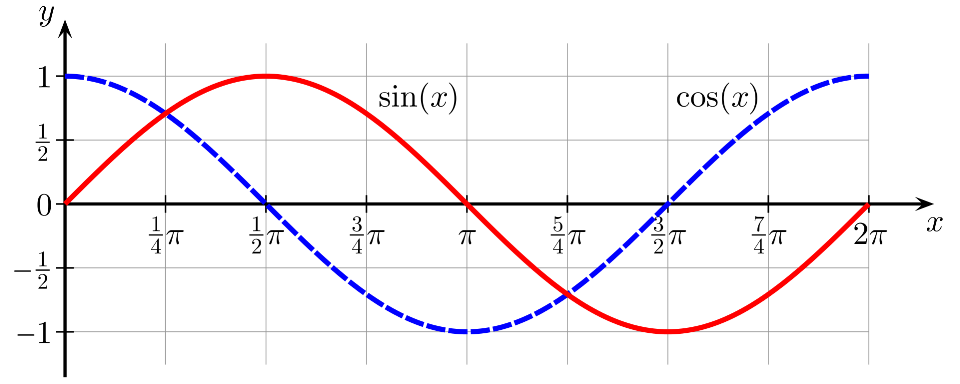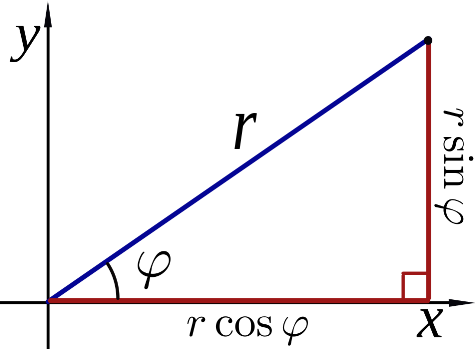Math 4. Sinewaves
4. Sinewaves
Sine and cosine
- Script reference: Mathf.Sin
- $\sin(x)$ and $\cos(x)$ are oscillating functions that return a value between $1$ and $-1$
- here, $x$ is an angle measured in radians (rad).
- Their form is the same, but $\cos$ is shifted from $\sin$ by $\pi/2$ rad:
$\sin(x + \pi/2) = \cos(x)$

Degrees vs. radians
xx
Sin & Cos triangle definition
xx
Circular motion
xx
Extra: Polar coordinates
- Wikipedia: Polar coordinate system
- Any two-dimensional vector $\vec{r} = (x,y)$ can be represented by its length $r$ and rotation angle $\varphi$ $x = r \cos{\varphi}$ $y = r \sin{\varphi}$

Code example
double phi = Mathf.pi/2;
double r = 5.0f;
Vector2 vec = new Vector2(
r * Mathf.Cos(phi),
r * Mathf.Sin(phi)
);
From cartesian ($x$ and $y$) to polar coordinates ($r$ and $\varphi$)
- What about the other way around?
$r = \sqrt{x^2 + y^2}$
$\varphi = \mathrm{atan2}(y,x)$
- $\mathrm{atan2}$ is an important function in game development
- Script Reference: Mathf.Atan2
- In code:
Vector2 vec = new Vector2(4.0f, 2,0f); double r = vec.Magnitude; double phi = Mathf.Atan2(vec.y, vec.x);